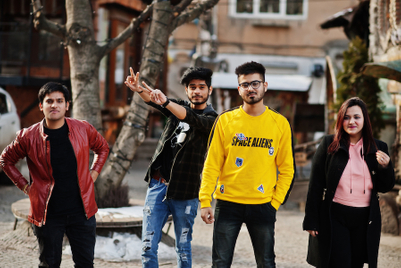
In a world driven by constant innovation and instant communication, millennials and Gen Z have emerged as the most connected, vocal, and influential consumer groups in history. Together, they account for nearly 50% of the global population and represent a combined spending power of over $3 trillion globally, according to Bloomberg and McKinsey reports.
Their preferences, expectations, and behaviours are reshaping industries — from fashion and food to finance and technology. To effectively engage these generations, brands must go beyond traditional marketing tactics. They must build authentic connections, embrace community-centric strategies, and stand for something bigger than profits.
Understanding the generational divide
Millennials, born between 1981 and 1996, came of age during the rise of the internet, social media, and smartphones. They value experiences over possessions, show strong brand loyalty, and tend to reward brands that align with their personal values.
Generation Z, born between 1997 and 2012, is the first generation to be ‘digital native’. They were practically raised on YouTube, Instagram, and TikTok. They are more diverse, more pragmatic, and more socially conscious than any generation before. They also expect brands to be transparent, inclusive, and responsive — in real-time.
While both generations are tech-savvy and socially aware, their consumer behaviours differ subtly. Millennials prefer curated, high-quality content and brand experiences, while Gen Z craves immediacy, authenticity, and participation—they want to be part of the story, not just the audience.
Beyond buzzwords: The rise of algorithm-aware branding
In a hyperconnected world shaped by cultural flux, the Gen Z and millennial cohorts aren't just consumers—they are movements in motion. With a combined global population nearing 50% and over $3 trillion in spending power, their values, behaviours, and expectations are forcing brands to abandon outdated playbooks and tune into something more dynamic: real-time relevance.
But here’s the catch. It’s no longer enough to say Gen Z craves authenticity or millennials support sustainability. That’s the starting line.
Today’s challenge, and opportunity, lies in understanding how these generations engage with content, culture, and commerce as platforms, not silos. To resonate, brands must stop shouting to the crowd and start building micro-movements.
From influencers to inner circles: Why community > reach
Equally important is creating a sense of community rather than just building a customer base. Today’s younger consumers don’t just buy products — they want to feel part of something bigger.
A Sprout Social study found that 66% of Millennials and 72% of Gen Z expect brands to engage in two-way conversations. Successful brands are fostering communities on platforms like Discord, Reddit, and private Instagram groups where customers can interact not only with the brand but also with each other. Companies like Nike and Glossier have shown that investing in brand communities creates loyal advocates who drive word-of-mouth marketing organically.
Influencer marketing isn’t dead — it’s just diluted. With every brand racing to partner with micro-influencers, the impact has plateaued. The new edge lies in community-led content.
Take Nykaa, for instance, which has shifted its Gen Z strategy toward engaging smaller, regional creators — not just for promote products, but to co-create content that feeds into live chats, app stories, and personalised recommendations. Instead of broadcasting beauty trends, they’re cultivating local trust. This level of embedded influence is more potent than traditional reach metrics.
Brands must now ask: Are we creating fans or followers? Because the community cannot be faked — and consumers can tell when it is.
Yes, personalisation works. But with rising digital fatigue and privacy awareness, the trade-off is getting trickier. In tier 2 and 3 Indian cities, for instance, users are increasingly rejecting retargeted ads and preferring experiences that feel ‘earned’, not ‘engineered’.
Netflix nails this by making personalisation invisible — recommendations feel intuitive, not invasive. Meanwhile, brands like Apple openly market their privacy-first stance as a competitive edge. The takeaway? Transparency isn’t just ethical — it’s strategic. Let the consumer opt in, not be tracked in.
Purpose fatigue is real: Say less, do more
One of the primary ways to build trust with millennials and Gen Z is through authenticity. According to the 2022 Edelman Trust Barometer, 88% of these cohorts said authenticity is critical when deciding which brands to support.
These consumers are quick to call out brands for performative activism or hollow messaging. Brands that lead with behind-the-scenes storytelling, showcase real employees and customers, and acknowledge their own growth areas build stronger emotional connections with these groups. Honest storytelling and an openness to showing vulnerability resonate far more than polished advertisements that feel disconnected from reality.
When every brand claims to “stand for something,” the noise becomes numbing. Gen Z can sniff out performative activism in seconds — and they respond to it with silence. The Edelman Trust Barometer report found that nearly half of Gen Z globally say brands are "trying too hard" to be political.
Patagonia offers a refreshing contrast. Its “Don’t Buy This Jacket” campaign wasn’t a gimmick — it aligned with years of environmental action. The brand’s decision to donate all profits to climate initiatives wasn’t just newsworthy; it was trust-building.
Marketers must learn: not every brand needs a “cause.” Sometimes, standing for a better product or a fairer process is enough — as long as it’s consistent.
Content saturation and the eight-second filter
A Microsoft study pegged Gen Z’s attention span at just 8 seconds — but that’s a misunderstanding. It’s not that they can’t focus. It’s that they’re ruthless with what deserves their attention.
The rise of short-form and visual content is another major shift that brands must adapt to. With Gen Z reportedly having an average attention span of just eight seconds — compared to Millennials’ 12 seconds, according to Microsoft research — short, visually compelling content wins.
Instagram Reels, and YouTube Shorts are not just platforms but ecosystems where trends are born and brands can thrive. Video remains king, with Wyzowl research showing that 91% of Gen Z prefers video content over traditional forms of marketing. To capture attention, brands must deliver their message quickly, visually, and engagingly.
So yes, short-form video dominates, but what sustains it is novelty, narrative, and self-expression. That’s why Reels, Shorts, and TikToks work best when they invite participation — duets, remixes, challenges. Brands that cling to static messaging will be scrolled past.
The frontier now? User-generated remixability. In this space, co-creation isn’t a feature — it’s the format.
It’s time to retire the gen Z versus millennial binary
One final provocation: the age-based lens is losing power. In reality, behaviour is the better segment. There are 45-year-olds on Discord and 17-year-olds obsessed with sustainability spreadsheets. Smart brands are now grouping audiences by values, platforms, and digital habits — not demographics.
It’s time we drop the generational clichés and start thinking in behavioural tribes.
The future of brand engagement isn’t about capturing everyone. It’s about resonating deeply with someone. In 2025, it’s not the brands with the biggest megaphones that win — it’s those that whisper the loudest inside the right circles.
From algorithm-savvy storytelling to privacy-positive personalisation, from authentic communities to meaningful quiet purpose — the brands that thrive will be those that trade mass messaging for micro movements. And in doing so, they won’t just earn attention — they’ll earn trust.

-Divanshi Gupta, founder and director, The Marcom Avenue


.jpg&h=334&w=500&q=100&v=20250320&c=1)

.jpg&h=334&w=500&q=100&v=20250320&c=1)
.jpg&h=334&w=500&q=100&v=20250320&c=1)
.jpg&h=334&w=500&q=100&v=20250320&c=1)
.jpg&h=334&w=500&q=100&v=20250320&c=1)

.jpg&h=334&w=500&q=100&v=20250320&c=1)
.jpg&h=334&w=500&q=100&v=20250320&c=1)
.jpg&h=334&w=500&q=100&v=20250320&c=1)
.jpg&h=268&w=401&q=100&v=20250320&c=1)



.jpg&h=268&w=401&q=100&v=20250320&c=1)
.jpg&h=268&w=401&q=100&v=20250320&c=1)
.jpg&h=268&w=401&q=100&v=20250320&c=1)

